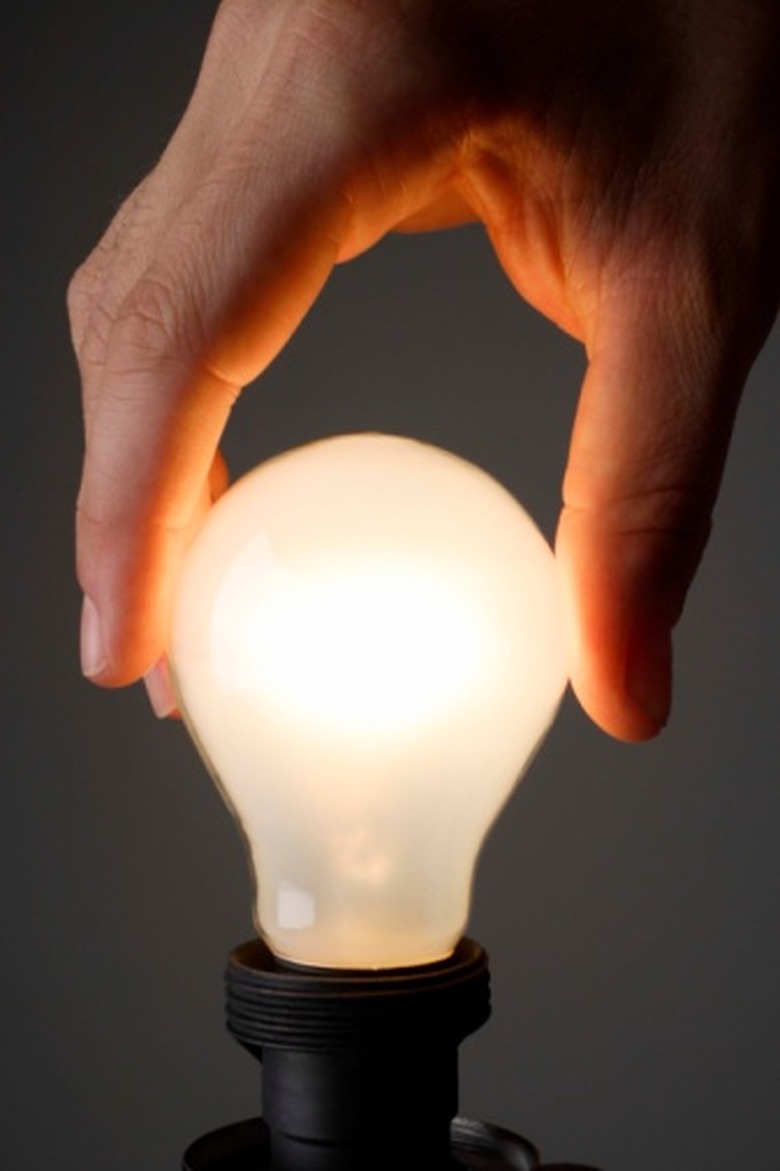Easy Electric Science Projects On Circuits
Demonstrating an understanding of electrical circuits and how they work can be an excellent science fair project for students. There are a variety of ways for students to build a simple circuit, which can then easily be used for projects. Students can also learn about electronic schematic symbols and create a legend to explain these to the viewers of their projects. Creating an electronic rain detector circuit allows students to demonstrate their electrical understanding as well as an environmental conscience for water and energy conservation.
Completing a Simple Circuit
Completing a Simple Circuit
Students can create a simple circuit using a "C"-sized battery, a piece of aluminum foil and a small light bulb. Students should provide a written explanation about how electricity works and what is needed to complete a circuit. A drawn diagram with the correct electrical symbols should also be part of the science fair project display. Students can present the project by connecting the aluminum foil to the negative side of the battery and the light bulb to the positive side of the battery and then touching the other side of the foil to the base of the bulb, causing it to illuminate.
The Series Circuit
The Series Circuit
Students can build a series circuit to create a slightly more complex circuit than the simple circuit. This project requires a little wiring know-how and possibly some help from an adult, depending on the age and capability of the student. The series circuit employs the use of a 9-volt battery, insulated wires, a switch and two light bulbs screwed into free-standing sockets. Students run a wire from the negative part of the battery to the switch. The wire should then continue to the first socket. Another wire is placed between the two sockets, connecting them. Then a final wire connects the second socket to the positive side of the battery, completing the circuit.
Homemade Circuit with Switch
Homemade Circuit with Switch
Rather than purchasing a switch and light bulb socket, students can create a simple circuit with a homemade switch and light bulb holder. Students will need a block of wood, metal thumbtacks, three pieces of insulated wire with one inch of each end of insulation stripped off, a battery, a clothespin, a nail, a paperclip and a light bulb. To create the homemade switch, students should wrap one of the exposed ends of the wire around a thumbtack and press it into the block of wood, repeat this same process with another piece of wire and thumbtack and connect the other end of the second wire to the positive side of the battery. The paperclip should be attached to another thumbtack in the wood between the first two thumbtacks. When the paperclip "switch" is pressed downward onto each other thumbtack, the circuit is completed. Students then connect the loose wire of the switch to another thumbtack in the wood and nail the clothespin with the jaws directly over the thumbtack. They should then place the light bulb into the jaws of the clothespin, ensuring the base of the bulb touches the head of the thumbtack below. The final wire is then wrapped around the base of the bulb and connected with the negative side of the battery.
Electronic Rain Detector Circuit
Electronic Rain Detector Circuit
Automated sprinkler systems can waste water and energy if they run when it is raining. Students can build a circuit that detects water and turns off to save energy but turns on in the absence of water. Using a sponge, electronic sensors lab kit and two 9-volt batteries, students can demonstrate the way a circuit can be modified to be used for conservation purposes. The kit comes with instructions and an introduction to electrical circuitry. This project can be used for a science fair or engineering project.
Cite This Article
MLA
Black, Gabrielle. "Easy Electric Science Projects On Circuits" sciencing.com, https://www.sciencing.com/easy-electric-science-projects-circuits-8034736/. 24 April 2017.
APA
Black, Gabrielle. (2017, April 24). Easy Electric Science Projects On Circuits. sciencing.com. Retrieved from https://www.sciencing.com/easy-electric-science-projects-circuits-8034736/
Chicago
Black, Gabrielle. Easy Electric Science Projects On Circuits last modified August 30, 2022. https://www.sciencing.com/easy-electric-science-projects-circuits-8034736/
